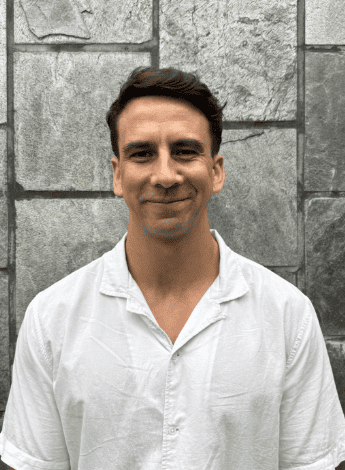
Activity modification for hip pain

A recent recipient of a PRF Seeding Grant is investigating the feasibility of conducting a randomised-control trial that investigates the effect of activity modification in adults with hip pain.
Dr Michael O’Brien APAM, originally from New Zealand, has worked in a range of settings internationally including in elite sport, public and private clinics, and musculoskeletal research.
For the past nine years he has worked at The Hip and Groin Clinic in Melbourne and he recently completed his PhD on adult hip dysplasia through La Trobe University.
‘Hip pain is the primary symptom for many conditions—such as hip impingement or hip dysplasia—which can lead to osteoarthritis.
'When people go on to develop osteoarthritis, it’s very burdensome not only for the individual but also for the healthcare system at large,’ says Michael.
‘We know that adults with hip pain are often afraid to move—they have reduced quality of life, reduced physical function, and reduced ability to play sport and recreation.

Dr Michael O'Brien.
'We still don’t have high-quality evidence for how to treat these patients, but we know that surgery can be quite costly, it’s
limited in its effectiveness and it comes with complications.’
Michael’s research project is titled ‘Graded activity modification in adults with hip pain: a feasibility trial.’
‘We are planning a 12-week intervention, divided into three four-week phases delivered by a physiotherapist,’ says Michael.
‘The first phase looking at reducing pain, the second at increasing their loading and the third at returning to a pre-injury level of function in sport.
'We will also be looking at any changes in their symptoms, quality of life and physical activity, and any muscle strength or hip range-of-motion changes.’
The intervention will involve five consults with a physiotherapist over the 12 weeks, which can be provided in person or via telehealth.
There is a large focus on education about activity modification.
‘People often feel like they don’t know what they should or shouldn’t be doing in terms of physical activity so this will be about trying to give them some guidance around those areas,’ says Michael.
‘Even exercise-based interventions have limited efficacy; equipment can be really expensive and they can come with large time commitments as well.
'Education regarding physical activity and activity modification is the main focus of this research project as it’s often not that well outlined in clinical trials.
'But it has been shown to be effective in other conditions such as back and knee pain, plus it can be low risk and low cost.’
The focus on patient education is becoming increasingly more prevalent, in both research and in clinical application.
‘In my more junior years as a physiotherapist, I would have thought hands-on and exercise-based treatments would be the most important aspect of the treatment that I could deliver to patients,’ says Michael.
‘As I’ve become more experienced, I’ve increasingly seen the value in education and advice about what the condition is, what may be aggravating it and the activities they can safely do to help with their condition.’
The PRF Seeding Grant will help Michael’s research in multiple ways.
‘Put simply, this research couldn’t have happened without this PRF grant,’ says Michael.
‘These funds specifically will go towards funding the research assistants and the physiotherapy staff who will be required to undertake both the clinical assessments, but also the physiotherapy interventions that are going to be part of this study.
'So I’m super grateful for the support.’
COURSE OF INTEREST
A pragmatic approach to lateral hip pain
© Copyright 2025 by Australian Physiotherapy Association. All rights reserved.




